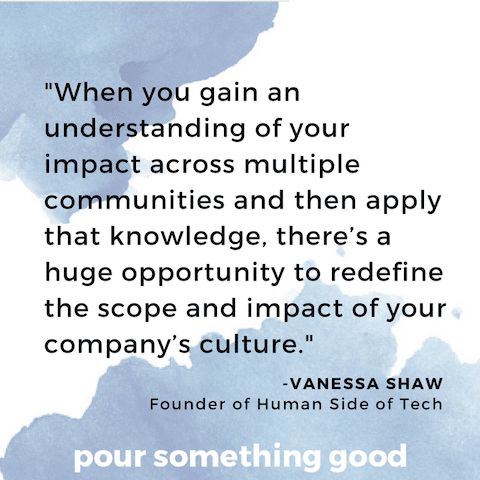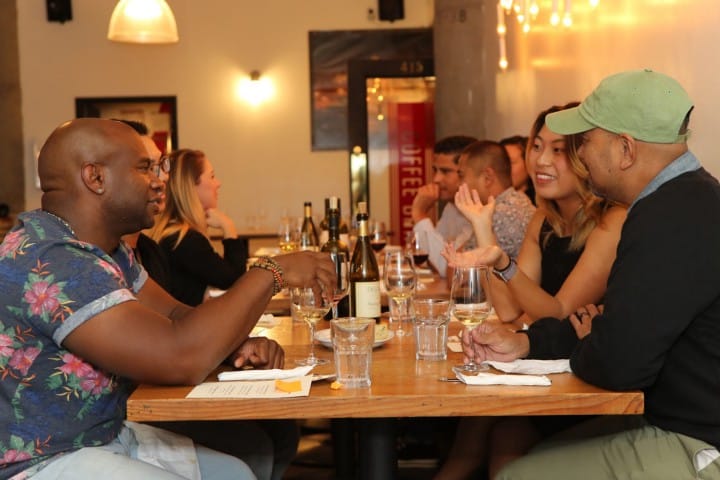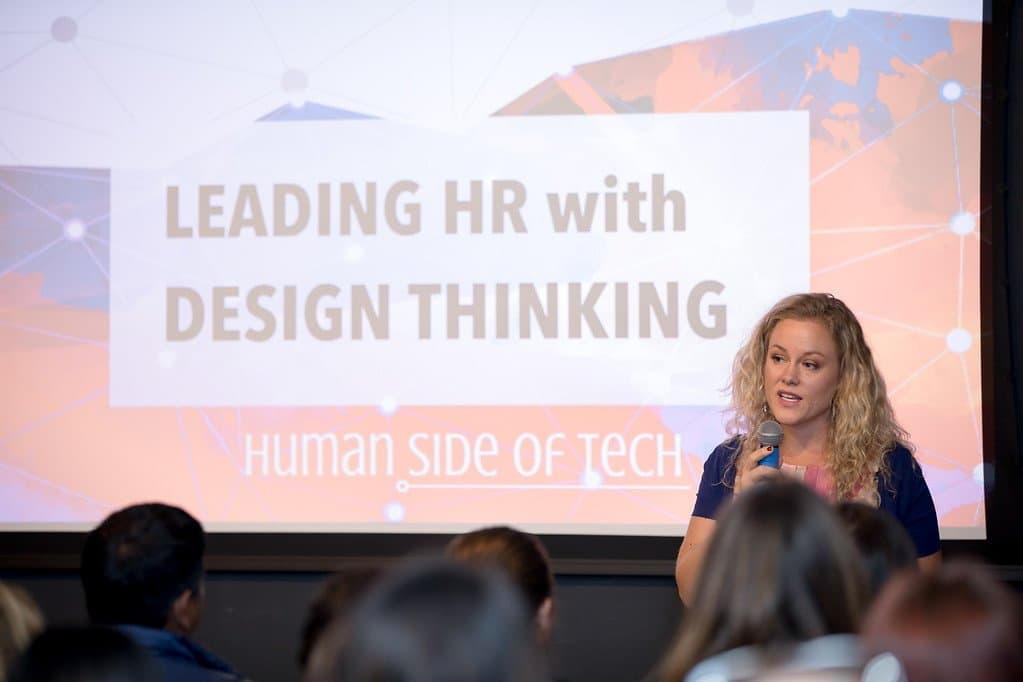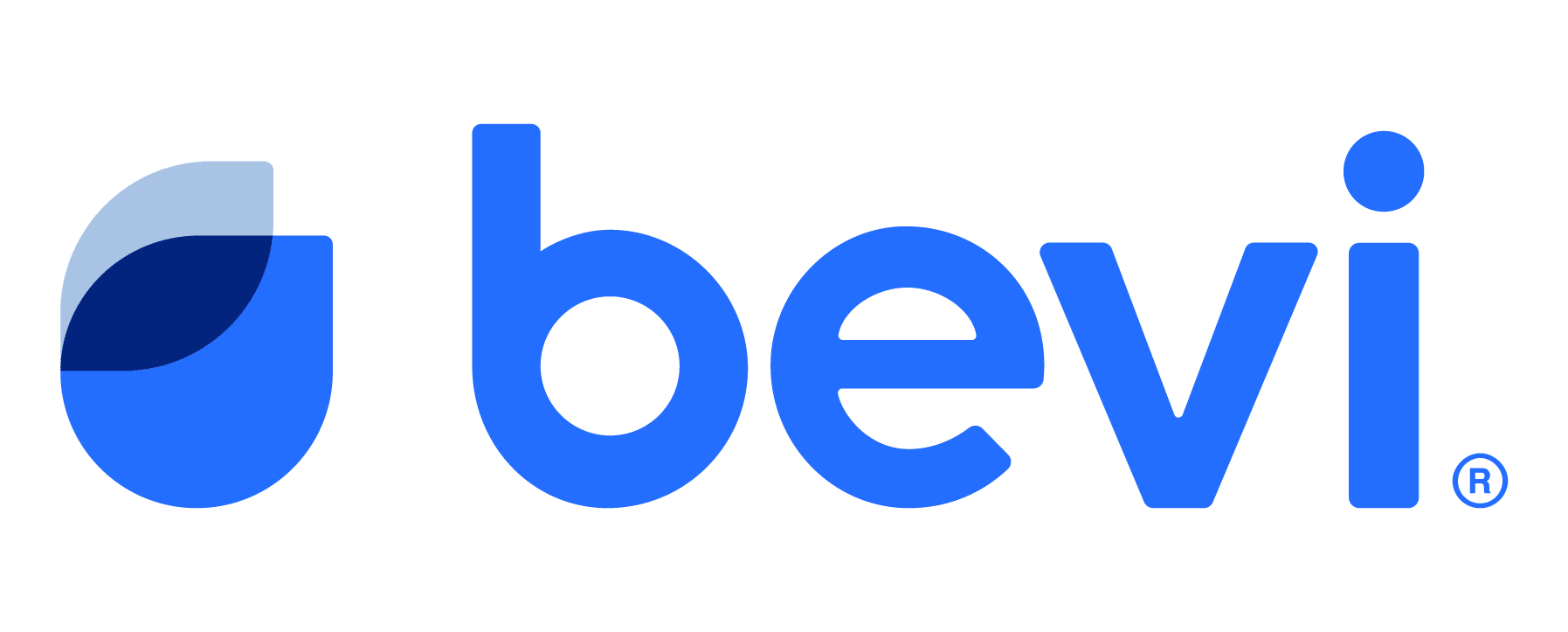
Vanessa Shaw speaking at Culture Summit, San Francisco.
You’ve been in the workplace culture space for a long time. Tell us about your journey.
I’ve been an advocate for the importance of workplace culture ever since 2001. I fell in love with culture as a body of work when I had my first experience living in a different country as a study abroad student in London. It has taken my career in many directions. I’ve worked in the nonprofit, public and private sector. I facilitated cross-cultural trainings for volunteer abroad programs, taught creative leadership skills at the Pentagon, and coached CEOs on how to design cultures that achieve their business goals.
Like anyone who has had a few career pivots, at some point you look at your career and ask yourself, “How does this all make sense?” I realized that ultimately I love bringing people together. My mission is to create a space for people to build community, be inspired, and have the courage to take action.

Bring your community together to discuss culture.
This is what Human Side of Tech is all about: I help company leaders to understand the value of culture and build it into their business strategy, as well as coach individuals on how to uncover their own ability to drive culture. More recently, I’ve been on the teams for TEDxBarcelonaWomen, Culture Summit, and supported Culture Amp in their Culture First tour. Throughout the year, I bring people together through interactive workshops that focus on incorporating Design Thinking and human-centered design practices into employee experience design.
How did your experience living and working abroad influence the way you think about culture in the context of the workplace?
Because of my international experience, I started out with a more global perspective of the meaning of culture. This global understanding of culture is different from what most people mean nowadays when they mention “workplace culture.” Within the US, culture is often seen from an organizational design or organizational psychology point of view.
There is, however, a whole other school of thought — anthropology — that is really the authority on culture. For me, I started with an understanding of anthropology, cross-cultural teams, and intercultural competence. Organizational design came later.

Photography by Jennifer Emerling, courtesy of All Hands.
While cultural discussions pertaining to Silicon Valley may dominate the conversation, there’s a multitude of ways to think about culture. One area that often gets overlooked is cross-sector collaboration, particularly collaborations between government and private sector organizations. These partnerships have a big influence on the world we live in.
Organizational design is an important aspect of workplace culture, but it’s just a small sliver of something much bigger.
It sounds like company culture is much bigger and far reaching than we all think.
Yes. Workplace design, team culture, and diversity are just slices of the pie. There’s a lot more on the table.
Airbnb, for example, has shown that their workplace culture not only impacts the people inside their office walls, but also affects what happens outside those walls in the local community and beyond. When you gain an understanding of your impact across multiple communities and then apply that knowledge, there’s a huge opportunity to redefine the scope and impact of your company’s culture.

In the same sense, there’s also a huge career opportunity here. Businesses, cities, and states are going to need more people that are culturally tuned in and able to build bridges between the existing gaps.
This might be a chicken-and-egg question, but why do you think we’re so focused on workplace culture these days as compared to 20, or even 10, years ago?
I don’t believe there was one specific event; like anything, it was a combination of things. I think we just reached a tipping point.
Different research kept pointing to the same trend: when a company invested in the employee experience, it improved the customer experience as well.
The research done by Glassdoor had a particular impact on me. They found that since 2009, Fortune’s “Best Companies to Work For” performed 84.2% better than the S&P 500, while Glassdoor’s “Best Places to Work” outperformed the general market by around 115 percent.
The message was simple: if you treat your employees well, your company was more likely to be financially successful. When people kept hearing this same message, they started to listen.

Guests at a Culture Leaders Dinner Party.
Around this same time, we began to see rapid change in a number of industries due to digital disruption. As a result, the skillset of the average worker changed dramatically as we entered into the knowledge economy in which we currently work.
We began to focus on the employee as a ‘user’ of a company; or in other words, we began to recognize employees as individuals the company directly served. This was a monumental shift. If you would like a more in-depth exploration of this, I recommend the book Reinventing Organizations by Frederic Laloux.
How does this factor into your company, Human Side of Tech?
A large part of why my brand is Human Side of Tech is due to the amount of focus on technology and how much, and how fast, it continues to change. I believe that these rapid changes in technology open up space to empower us to focus more on humanity.
Human interaction facilitated by technology is everywhere. Everyone has a favorite story about an experience with a Lyft driver. We didn’t have these interactions until technology brought us together.

Some people are worried and claim that technology is getting rid of human interaction. I take an optimistic stance. As the famous Spider-Man quote goes, “with great power comes great responsibility.” I see technology as a huge opportunity to bring us together, but we have to be smart about it.
Here’s a hard question: how do you define culture?
Culture is everywhere. And it’s created by everyone.
There are many, many different definitions. Instead of adding yet another definition, I like to remind people of an aspect of culture that is typically unmentioned: culture is a value system by which we judge the world around us. It encompasses how we define good or bad, right or wrong, pretty or ugly, admirable or disgraceful, successful or not.
It’s trendy to say “I’m not judgmental.” That’s simply not true — all humans are programmed to judge.
Knowing this, there’s still room to grow, and the way we do this is by improving our own ability to understand how we are judging. By defining the core values of a culture, you’re setting up the cultural system that will establish what you believe is good or bad, a reason to hire or fire, and what the company defines as a successful quarter.
Even though “culture” has reached buzzword status, what are some of the biggest challenges companies still face when trying to define— or redefine — workplace culture?
When it comes down to it, we need to unlearn a lot of things.
There’s a long history of how companies have been run, how we define roles in Human Resources, and how HR serves a company overall. Traditional Human Resources was designed to serve the average employee 60 years ago. Because of this, there are many ingrained, systemic issues that have to be unlearned and unraveled.
It’s much harder to unlearn what we already know than to learn things that are brand new.
We’re now seeing that Human Resources is becoming ‘People Operations.’ This doesn’t change too much. This is what I would call a pivot.

What I really love seeing are renovations. When you renovate your house, you break down walls and you create a whole new space to live in. Ultimately, we need to unlearn and undo. We need to renovate the way organizations manage people, culture, talent — the entire employee experience.
One way to begin doing this is by giving space for the creative process. It is not always the fastest way to get immediate results, but it offers the ability to find the long term, scalable impact.
This is why I’m a proponent of design thinking: it helps us to look at things with fresh eyes, to come up with ideas you never thought could exist, and experiment with new approaches that can completely revolutionize your organization.
To find out more about Vanessa Shaw and her upcoming events, visit the Human Side of Tech website.


